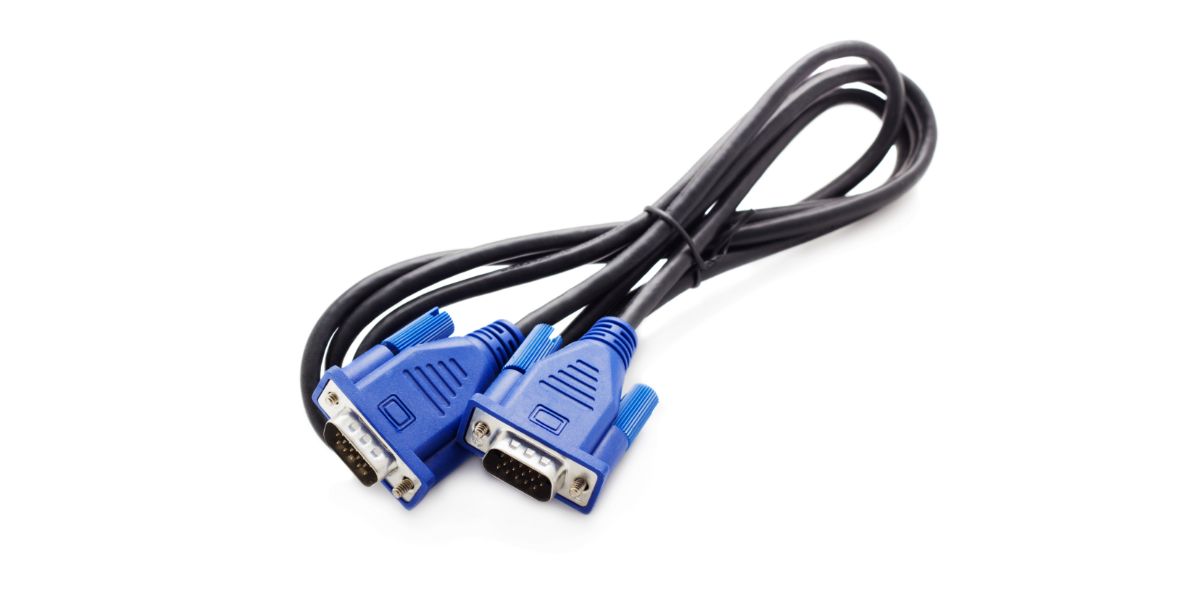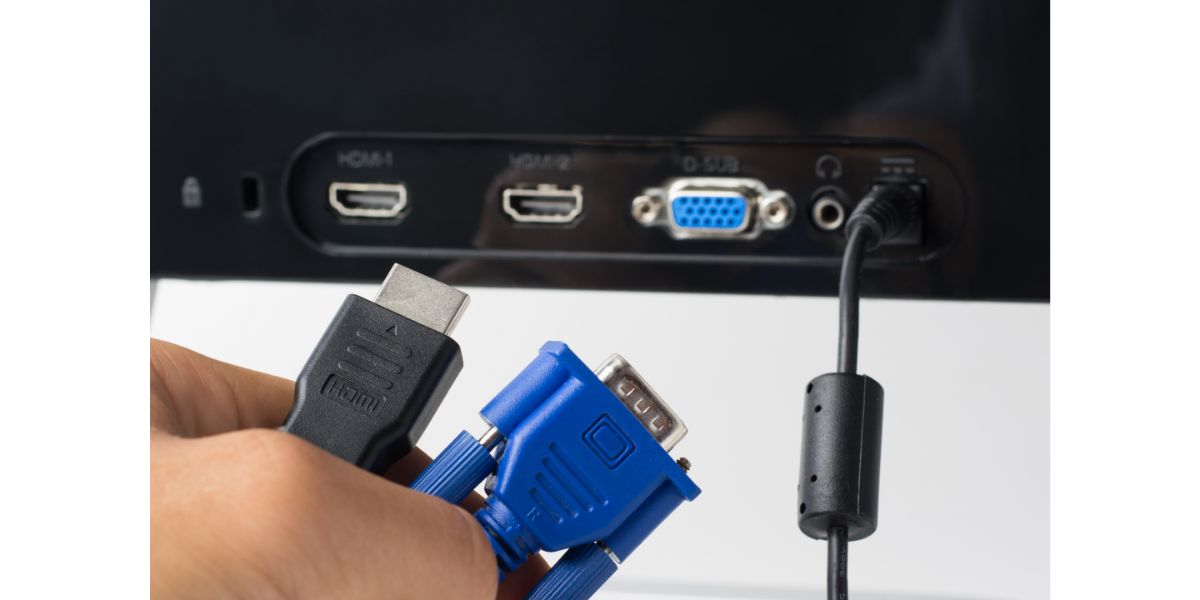Disclaimer: This post may contain affiliate links, meaning we get a small commission if you make a purchase through our links, at no cost to you. For more information, please visit our Disclaimer Page.
Despite VGA cables being steadily replaced by more advanced technologies, primarily HDMI, they’re still in use and worth learning more about.
VGA cables do affect screen resolution: the longer the cable is, the smaller the maximum resolution it can support. To accurately transmit videos in formats up to 1920×1080, it’s recommended to use cables 25-30 feet (7.6 to 9 meters) in length.
Table of Contents
How VGA Cable Length Affects Resolution
The highest resolution a VGA cable can support is determined by the cable’s length. The correlation is rather straightforward: the longer it is, the more limited its ability to accommodate higher resolutions.
Each resolution format requires a certain bandwidth. Due to the analog nature of VGA cables, there’s no limit to their capacity in this regard. However, the longer the signal has to travel before it reaches your monitor, the more the available bandwidth shrinks.
Therefore, longer cables can’t support higher video resolutions. Of course, the length of a VGA cable is not the main factor determining video quality. The signal source and video card also weigh in, so the final result will depend on the combination of their characteristics.
For reference, here are the recommended VGA cable lengths for various resolution formats:
- 25-30 feet (7.6 to 9 meters): 1920×1080 (HD 1080p)
- 50-90 feet (15 to 27 meters): 1024×768 and 1280×1024 (HD 720p)
- 100 feet (30.5 meters): Up to 800×660 (SD)
However, these recommendations are provided assuming you’re using a high-quality cable, and the other two devices involved (computer and video card) are powerful enough to allow for an accurate display of visuals.
Otherwise, you’re likely to face issues at 1024×768 or even 800×660 with cables over 33 feet (10 meters) long. Flickering, glitches, or signal loss can easily occur if the signal gets too weak by the time it reaches your monitor.
One way to avoid that is to use VGA boosters. The most popular ones are arguably CAT5e or CAT6. They’re virtually the same technology, with the key difference being the supported frequencies: the latter’s bandwidth is more than twice as large as the former’s.
Both systems are relatively inexpensive and easy to use. They essentially prolong the distance on which VGA can transmit the signal without losing it. As a result, the length sufficient for each resolution can be increased: up to 300 feet (30 meters) for 1024×768 and 984 feet (300 meters) for 640×480.
What Resolutions Can a VGA Cable Support?
As I’ve mentioned, the variety of supported resolutions is determined by the bandwidth, which, in turn, depends on the cable length. So, theoretically, VGA cables could go beyond 1920×1080, yet, in reality, things are a little more complicated.
First of all, VGA cables are analog, so the computer has to convert its digital signals to analog ones in order to transmit them via VGA. Then, digital monitors have to process the signal again and turn it back from analog to digital. This chain is power-demanding and doesn’t always produce an accurate result; more often than not, quality is affected in the process.
Moreover, analog technology is simply outdated and not as reliable as digital signals. When VGA was first introduced in 1986, it was designed to support the standard PC resolution, which was 640×480 at the time. Even 800×600 only became widespread in the 1990s.
It makes sense that VGA cables are simply insufficient to accommodate the higher resolutions we’re used to today. As technology marches forward, it’s hard for analog devices to keep up in quality and efficiency. Analog transmission makes the signal weaker the longer it travels, and it can’t compete in accuracy and reliability with devices that use digital signals.
For all these reasons, it’s not recommended to use a VGA cable for resolutions of 2560×1440 or higher, like 4k or 8k. While the cable itself doesn’t have any particular limitations when it comes to video format, you’re not likely to get the desired quality in the end.
The general advice is to use VGA cables for 800×660, 1024×768, or 1280×1024, ensuring it’s of proper length to avoid issues with the video quality. High-quality cables paired with a powerful CPU can produce decent results at 1920×1080.
VGA vs. HDMI Technology
I’ve mentioned several times throughout the article that there are more advanced modern alternatives for VGA cables that use digital signals instead of analog. The most common one today is HDMI (High-Definition Multimedia Interface).
HDMI has virtually taken the place of VGA cables over recent years. Most PCs and laptops nowadays are equipped with HDMI ports, while finding devices with ports for VGA is becoming increasingly more challenging.
The primary reason for this is that HDMI uses a more efficient technology that can effortlessly support high resolutions and provide a high level of visual accuracy. They’re also highly durable; if interested, read this article on the average HDMI lifespan.
It’s no wonder that VGA cables are fading into oblivion: HDMI is a clear upgrade in terms of connectivity and video transmission. Still, some people continue using VGA: it’s cheap, and many older devices support it.
So, I’d like to discuss the two technologies in comparison to determine their key differences and make a conclusion about whether switching to an HDMI is a good idea.
The Main Differences Between VGA and HDMI
- VGA uses analog signals, and HDMI uses digital. We’ve already touched on this — as the signal sources and monitors switched to digital signals, VGA cables became much less efficient due to the multiple conversions required.
- HDMI is more stable. While VGA cables are prone to signal interference, and analog signals weaken the longer they travel, HDMI provides a stable connection and performs better.
- HDMI is faster. This, again, has to do with it using digital signals — they allow for a fast response rate and don’t require conversion.
- VGA isn’t as widely compatible with other devices. It used to be the standard, which is why VGA ports are still present in older PCs. However, the compatibility rates are changing in favor of HDMI. Due to its high efficiency, more devices today include HDMI ports than VGA ports.
The Pros and Cons of VGA Cables
Pros
- Compatible with many older devices, especially projectors
- Affordable
- Easy to find
Cons
- Doesn’t support higher resolutions
- Shows worse video quality due to weakening analog signal and multiple conversions
- Slowers response rate and risks of glitches and signal loss
- Less compatible with newer devices
- Length of the cable directly affects resolution: you can’t transmit high-resolution videos over longer distances without boosters.
The Pros and Cons of HDMI
Pros
- Works faster due to utilizing digital signals
- Supports high-resolution videos with cable length up to 50 feet (15 meters), and twice as much with boosters
- Preserves quality with better accuracy
- Highly compatible with today’s PCs, laptops, and other devices
- Stable and less prone to glitches
Cons
- More expensive than VGA cables
- Prone to electromagnetic fields without proper isolation
Bottom Line
From everything we’ve discussed, it’s clear HDMI is a more advanced and reliable technology than VGA cables. Granted, some older devices, particularly projectors, only support VGA, which is why it’s still in use.
Still, if possible, I highly recommend switching to HDMI, especially for streaming and gaming. It’s much more efficient and fast and allows for better quality, while VGA struggles with higher resolutions, and signal loss or delays are common.
Final Thoughts
Because VGA cables use analog signals, the output quality is affected by the cable length, meaning the longer the signal has to travel, the more the bandwidth shrinks.
This is why the supported resolutions for VGA cables are limited, and you can really only use them for formats up to 1920×1080.


